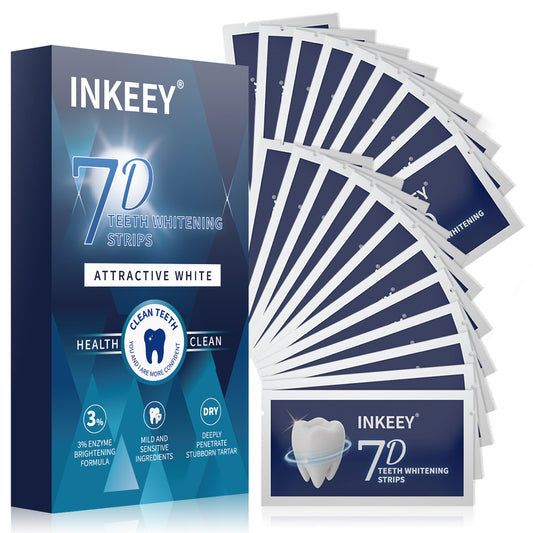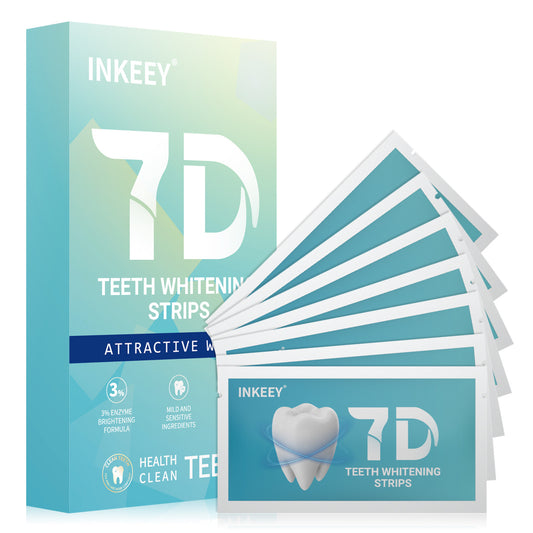Teeth whitening strips contain peroxide or bleach. Thus, they work to whiten your teeth the same way bleach works to whiten your clothes or your hair. The peroxide bleaches color from your teeth in order to restore their natural, white color.
Most whitening strips are made out of polyethylene, which is a thin, elastic type of plastic. The plastic is coated with peroxide, and certain types of strips contain more than others. You apply the strips to your teeth according to the package directions so that the peroxide comes into contact with your tooth enamel. This allows the peroxide to remove stains and discoloration from the surface of your teeth. Some strips need to be removed after a certain period of time, while others do not.
The primary benefit of using teeth whitening strips is that they are less expensive than other teeth whitening treatments. Most at-home whitening tools are more affordable than going to the dentist to get your teeth whitened. Strips tend to be inexpensive because they are made out of materials that don’t cost very much; plastic and peroxide are both relatively cheap materials to manufacture.3
In addition to the low cost, whitening strips are easy to use. Most kits come with 2 sets of strips. One set is for your upper teeth and the other set is for your lower teeth. The kit also comes with instructions on how long to leave the strips on your teeth. Usually you have to put them on twice a day for an average of 2 weeks.
Finally, whitening strips deliver quick results. Your teeth should begin to look whiter within a few days of using the strips and the results should last at least 4 months.
Always brush your teeth before you use whitening strips, otherwise plaque and bacteria will be trapped between the strip and your teeth. This makes it more likely that you will experience tooth decay or other dental problems. In addition, if there’s dental plaque or bacteria on the teeth, it’s more difficult for whitening strips to do their job.
However, you should not brush your teeth immediately before you apply whitening strips as they can sometimes irritate your gums. Instead, wait at least half an hour after brushing your teeth to apply whitening strips.5
If you see spots or excess gel on your teeth after removing the whitening strips, you can brush immediately after removing the strips. Doing so won’t harm your teeth. Of course, you should continue brushing twice a day while routinely using whitening strips so that your teeth will remain healthy and won’t become discolored again.
The majority of whitening strips are safe to use; however, if you use whitening strips that contain chlorine dioxide, you could destroy the enamel on your teeth. Chlorine dioxide is the same acid used to disinfect swimming pools. It whitens teeth by eating away the surface of the enamel. Essentially, you are wearing down the enamel on your teeth and increasing your risk for tooth decay if you use this type of whitening strip.6
Even if your whitening strips don’t contain chlorine dioxide, it’s important to follow the directions on the package. Don’t get impatient and apply more whitening strips or use them for a longer period of time than is recommended. Doing so could be harmful to tooth enamel. Products that dissolve enamel can also harm gum tissue, so if your gums are irritated after using a product for a few days, you may want to discontinue use and see your dentist.


